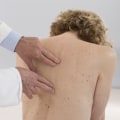Osteopathic manipulation is a distinctive form of hands-on care practiced by osteopathic physicians (DOs), who are trained to diagnose and treat a wide range of conditions using this specialized technique. This approach to healthcare is rooted in the principle that the body's systems are interconnected and that the body possesses an innate ability to heal itself. DOs, who undergo comprehensive medical training similar to their MD (Doctor of Medicine) counterparts, are uniquely equipped to perform osteopathic manipulation due to their extensive understanding of the musculoskeletal system and its influence on the body's overall health. This form of treatment involves the use of the hands to diagnose, treat, and prevent illness or injury, employing techniques such as stretching, gentle pressure, and resistance to restore motion, promote healing, and support the body's natural functions.
Osteopathic manipulation is not just about treating specific symptoms but focuses on restoring balance and enhancing the body's natural ability to maintain health. DOs are trained to look beyond the obvious symptoms and consider the patient's lifestyle, environment, and overall well-being when diagnosing and treating. This holistic approach to medicine is what sets osteopathic physicians apart and allows them to offer comprehensive care that addresses the root causes of discomfort or disease rather than just the symptoms. Their extensive training in osteopathic manipulative treatment (OMT) enables them to apply a variety of techniques tailored to each patient's unique needs, offering a non-invasive and drug-free alternative to conventional treatments.
The practice of osteopathic manipulation is widely recognized for its effectiveness in treating musculoskeletal issues, such as back and neck pain, but its benefits extend much further. It can also be used to alleviate conditions such as asthma, sinus disorders, and migraines, among others, by improving the body's mechanical function and enhancing overall health and well-being. DOs' holistic view of medicine also means they often incorporate other complementary treatments into their practice, including counseling on diet, lifestyle, and exercise. In this context, some DOs may even recommend or support integrative practices such as meditation to promote mental and emotional health. In fact, the interest in holistic approaches has led to the development of programs like online meditation certification, which can complement osteopathic manipulation by offering patients tools to reduce stress, improve mental clarity, and enhance their quality of life. While osteopathic physicians do not typically provide online meditation certification themselves, their appreciation for the interconnectedness of the body and mind means they recognize the value of such practices in achieving optimal health.
Osteopathic physicians hold a unique place in the healthcare system, offering a blend of traditional medical knowledge and a holistic approach to care that emphasizes the body's potential for self-regulation and healing. Their training in osteopathic manipulation allows them to apply these principles in a hands-on manner, providing a distinctive form of treatment that supports the body's health holistically. As healthcare continues to evolve, the role of DOs and their use of osteopathic manipulation will likely become increasingly significant, reflecting a broader shift towards more integrative and patient-centered approaches to care. This trend underscores the growing recognition of the importance of treating the whole person—body, mind, and spirit—in promoting health and preventing disease. The practice of osteopathic manipulation by DOs embodies this holistic perspective, offering patients a comprehensive approach to wellness that harnesses the body's innate healing capabilities.







